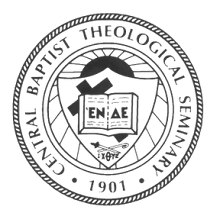Transfiguration
Sunday concludes the Season after the Epiphany, which is all about
light—stunning, shimmering, flickering, blazing, sparkling, illuminating, and
revealing. God’s light has broken into
the world in the person of Jesus, and we squint toward its brightness, seeking
to perceive the profile of what we might become.
 |
| Transfiguration icon by Theophanes the Greek, 15th century |
Our lectionary
texts reflect the mode of God’s self-disclosure in the world, wrapped in the
cloak of unfathomable light. Psalm 50
does not portray a gently beaming deity, which our postmodernity likes to
domesticate. God shines forth, but the
imagery of “devouring fire” in linked to beautiful and terrifying presence. A Psalm of judgment, it reminds us that our
lives are lived before God, inescapably so.
“Before whom all hearts are open” means our lives are oriented toward
our maker, and God knows when we live as if God were not. Forgetting God was and is the chief sin.
The Epistle
lesson cautions the reader against being blinded by the “god of this world,”
that is one of our own fashioning.
Having been flattened by a blaze of light, the Apostle now recognizes
that the same light of creation is bursting forth in the face of Jesus
Christ. The incarnational narrative now
transforms the horizon of every human; we are also “fitting vehicles to bear
the divine,” in the words of H. Wheeler Robinson. A earthen human can carry the
light and presence of divinity.
And this leads us
to the Gospel narrative about transfiguration.
The subject of great art, distinctive iconography, and barn-burning
sermons, this episode challenges and illumines God’s work among us.
 |
| JESUS MAFA. Transfiguration, from Art in the Christian Tradition, a project of the Vanderbilt Divinity Library, Nashville, TN. |
The distance
between heaven and earth is bridged in Jesus.
His presence is the response to the prophet’s searing cry, “O that you
would rend the heavens and come down” (Isaiah 64:1). This scene on the summit of Mt. Tabor,
traditional site of the transfiguration, reveals something new to his
disciples—who never come across as very quick in Mark’s Gospel. The writer’s theological purpose in crafting
this scene is to put Jesus in the larger historical landscape of Israel and
God’s covenantal purpose. The heavens have been rent, and God is loose in the
world in the form of Jesus.
Elijah and Moses
appear, talking with Jesus. Both were
associated with mountains, and when the disciples climbed the mountain of the
transfiguration, they caught a glimpse of a different realm. Where did they go? Did they enter or at least glimpse eternity,
where God’s time is not bounded? We do
know that they got a sense of who Christ truly was, and they were dumbfounded,
for they had beheld his glory. They said
not a word after the divine voice shut down Peter’s building project. Finally,
they saw only Jesus.
Seeing him is the
key to transfiguring human identity. We
contemplate how he brings the glorious intention of God into the realm of human
possibility; he lived as the “only normal human who ever lived,” in John
Robinson’s words.
Christians
recognize themselves as “unfinished people.”
It “doth not yet appear what we shall be, but when he appears, we shall
be like him.” What does this mean?
 |
| Ruscha, Edward. Miracle, from Art in the Christian Tradition, a project of the Vanderbilt Divinity Library, Nashville, TN. |
We
are transfigured (inevitably changed by) the pattern or template, which claims
our deepest attention—we become like what we regard so favorably. If we want to
come to the fullness of the unique human identity purposed for us, we must
focus attention on God’s self-revealing in Christ, and the ways he continues to
shine through faithful sisters and brothers.
Don’t
you love to see someone who has gained a heart of wisdom and is transparent to
goodness? This past Saturday such a
person was buried in Louisville, KY. Her name was Martha Ruth, and she lived up
to the reputation of both names. I lived
with her family in Jerusalem when I was 24, a second year seminary student who
went as a missionary to Israel—not quite sure whom to convert. The one converted was me as I observed how
Martha lived in East Jerusalem with her neighbors, her family, and friends—both
Jewish and Palestinian. In the quotidian
tasks of each day—doing laundry, working in the garden, going to market,
tutoring and sewing—she connected in loving ways and offered faithfulness
witness to the grace of the Gospel. Her love for Jesus and others was a
transfiguring dynamic in her life, and now her works follow her.
Do
you want to become a living icon, a person transfigured by grace? I surely do, and certainly our world needs
such transformed persons more than ever.
It is simply too brutal to be without the light of God shining through
those who will do the work of compassion and justice.
Molly T. Marshall
Central prepares women and men for seeking God, shaping church, and serving humanity.



No comments:
Post a Comment